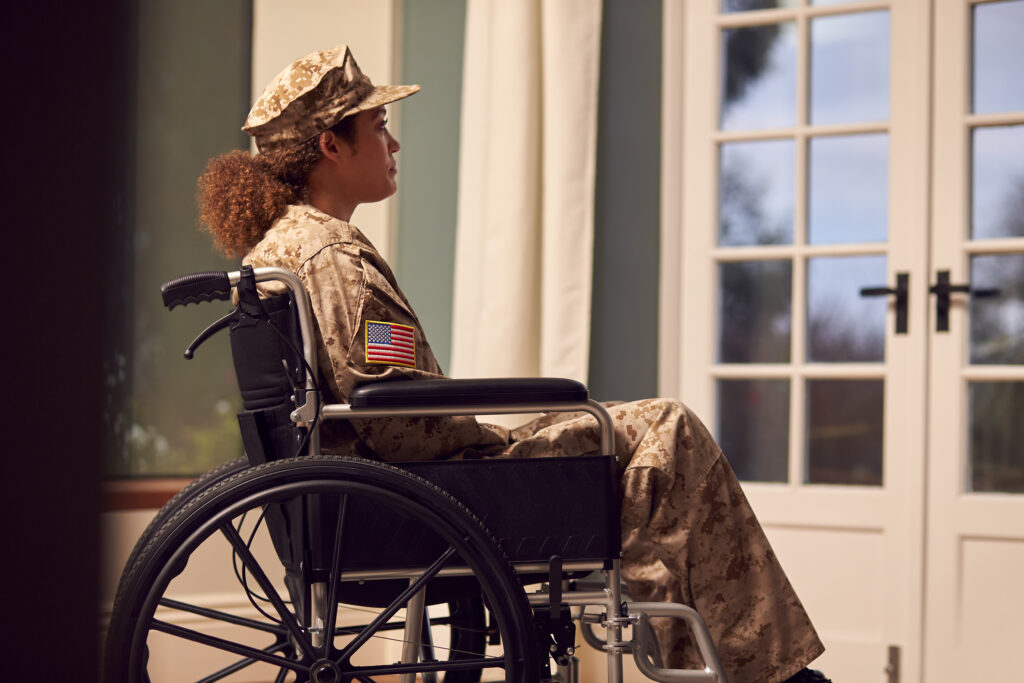
Coding Considerations for A New Chapter for Gulf War Veterans
Today is Veterans Day, so first I would like to thank those who have served or are currently serving in the military for their service

The aftermath of Florence prompts a review of emergency preparedness
We know the 2018 hurricane season is upon us, but we are always unsure of where the individual storms will appear, what their track will be, and how they will behave. Hurricane Florence—since downgraded to a tropic depression— has been a slowly unraveling puzzle that has kept us all in suspense.
As it seems that these catastrophic events are becoming more prevalent, we in healthcare are becoming better prepared, learning about best practices and developing contingency plans. This has been good for providers, but reminders are always helpful.
As many hospitals were in the path of our current natural disaster, Florence, increased awareness has been brought to treating patients appropriately and safely, as well as managing operations. A key component of that is the health information of the patient. In South Carolina, some patients were transferred to sister hospitals to ensure safe care. Here are some things to think about in the midst of a disaster.
Command centers are the heart and soul of any disaster operation. It is instrumental to ensure that your departments are functioning properly and that the unknown can be handled and addressed appropriately. Ensure that your key leaders are involved.
Access to information is critical to patients to reduce and eliminate risks and provide high-quality care. The electronic health record (EHR) may be unavailable at your facility during a disaster, so ensure that key individuals know how to revert to paper processes if needed and locate information they may need. Gaps in access can impact triage, confidentiality, and ultimately, documentation. Keep in mind that some providers have never had to utilize paper, so make sure there is an understanding of documentation for paper records and that this may impact time. This should be done prior to facing any major issue. If being done concurrently, institute a Q&A process.
Patient information may be needed at a facility unknown to the patient. Always consult your legal counsel for this process, but keep in mind that it is known that, per HIPAA, “providers and health plans covered by the HIPAA Privacy Rule can share patient information in all of the following ways: healthcare providers can share patient information as necessary to provide treatment; sharing information with other providers (including hospitals and clinics); referring patients for treatment (including linking patients with available providers in areas where the patients have relocated); and coordinating patient care with others (such as emergency relief workers or others that can help in finding patients appropriate health services).”
Patients and consumers can utilize tools such as the EHR, patient portals, American Health Information Management Association’s (AHIMA’s) myPHR.com, the Centers for Disease Control and Prevention’s (CDC’s) “Keep It With You: Personal Medical Information Form,” and the Veterans Administration’s Blue Button, all of which can be extremely beneficial in emergency situations for awareness of conditions, medications, allergies, etc. As time progresses, consumers should and will maintain more of their information. The challenge will be in the reliability and validity of that information.
Staffing may be an issue during an emergency, as well as locating and communicating with staff. Making alternative arrangements ahead of time will be beneficial to any plans you may have during a natural disaster. Many departments in hospitals and health systems have remote staff who also may be directly impacted by the weather. Be proactive and plan if there are key people in management roles or other staff key to work completion, in areas such as release, coding, transcription, utilization review, or clinical documentation improvement. Maintain contact information that is current to follow up on employee safety, minimize disruption, and make changes to duties as appropriate. Also, stay in touch with any vendors for support to make them aware of potential coverage that may be needed for increased volumes or staffing issues.
For coding, remind staff about the importance of reporting external cause codes. Clarify that X37.0 should be assigned only if an injury is a direct result of the storm, and this should be clear in the documentation if reported (ICD-10-CM Coding Advice for Healthcare Encounters in Hurricane Aftermath Coding Clinic for ICD-10-CM/PCS, Fourth Quarter 2017: Page 112). There will continue to be a great deal of flooding with Hurricane Florence, and it may be beneficial to review the Coding Clinic referenced above. Codes from X38.0 (with the appropriate seventh character) should be assigned when an injury occurs due to flooding resulting directly from the storm.
Record preservation should be of the utmost importance. Some providers may have records stored offsite or still in-house. Ensure that you are protecting records from water damage and destruction. At times, these records are placed in storage and forgotten until requested. Safeguard these records by moving them, if needed. This also may be important for any computer systems you have in place; ensure that you have backup in a remote location.
Always debrief your staff to ensure that you can celebrate what you did well during disasters, but most importantly, put corrective actions in place to improve and do better.
Be safe out there, everyone!


Today is Veterans Day, so first I would like to thank those who have served or are currently serving in the military for their service

This past weekend we “fell back” and gained that extra hour. This makes it a good time to look at how we assign codes for
Please log in to your account to comment on this article.

Accurately determining the principal diagnosis is critical for compliant billing, appropriate reimbursement, and valid quality reporting — yet it remains one of the most subjective and error-prone areas in inpatient coding. In this expert-led session, Cheryl Ericson, RN, MS, CCDS, CDIP, demystifies the complexities of principal diagnosis assignment, bridging the gap between coding rules and clinical reality. Learn how to strengthen your organization’s coding accuracy, reduce denials, and ensure your documentation supports true medical necessity.

Denials continue to delay reimbursement, increase administrative burden, and threaten financial stability across healthcare organizations. This essential webcast tackles the root causes—rising payer scrutiny, fragmented workflows, inconsistent documentation, and underused analytics—and offers proven, data-driven strategies to prevent and overturn denials. Attendees will gain practical tools to strengthen documentation and coding accuracy, engage clinicians effectively, and leverage predictive analytics and AI to identify risks before they impact revenue. Through real-world case examples and actionable guidance, this session empowers coding, CDI, and revenue cycle professionals to shift from reactive appeals to proactive denial prevention and revenue protection.

Sepsis remains one of the most frequently denied and contested diagnoses, creating costly revenue loss and compliance risks. In this webcast, Angela Comfort, DBA, MBA, RHIA, CDIP, CCS, CCS-P, provides practical, real-world strategies to align documentation with coding guidelines, reconcile Sepsis-2 and Sepsis-3 definitions, and apply compliant queries. You’ll learn how to identify and address documentation gaps, strengthen provider engagement, and defend diagnoses against payer scrutiny—equipping you to protect reimbursement, improve SOI/ROM capture, and reduce audit vulnerability in this high-risk area.

Only ICD10monitor delivers what you need: updates on must-know changes associated with the FY26 IPPS, including new ICD-10-CM/PCS codes, CCs/MCCs, and MS-DRGs, plus insights, analysis and answers to your questions from two of the country’s most respected subject matter experts.

Get clear, practical answers to Medicare’s most confusing regulations. Join Dr. Ronald Hirsch as he breaks down real-world compliance challenges and shares guidance your team can apply right away.

Federal auditors are zeroing in on Inpatient Rehabilitation Facility (IRF) and hospital rehab unit services, with OIG and CERT audits leading to millions in penalties—often due to documentation and administrative errors, not quality of care. Join compliance expert Michael Calahan, PA, MBA, to learn the five clinical “pillars” of IRF-PPS admissions, key documentation requirements, and real-life case lessons to help protect your revenue.

During this essential RACmonitor webcast Michael Calahan, PA, MBA Certified Compliance Officer, will clarify the rules, dispel common misconceptions, and equip you with practical strategies to code, document, and bill high-risk split/shared, incident-to & critical care E/M services with confidence. Don’t let audit risks or revenue losses catch your organization off guard — learn exactly what federal auditors are looking for and how to ensure your documentation and reporting stand up to scrutiny.

Learn how to navigate the proposed elimination of the Inpatient-Only list. Gain strategies to assess admission status, avoid denials, protect compliance, and address impacts across Medicare and non-Medicare payors. Essential insights for hospitals.
Prepare for the 2025 CMS IPPS Final Rule with ICD10monitor’s IPPSPalooza! Click HERE to learn more
Get 15% OFF on all educational webcasts at ICD10monitor with code JULYFOURTH24 until July 4, 2024—start learning today!
CYBER WEEK IS HERE! Don’t miss your chance to get 20% off now until Dec. 1 with code CYBER25
CYBER WEEK IS HERE! Don’t miss your chance to get 20% off now until Dec. 2 with code CYBER24